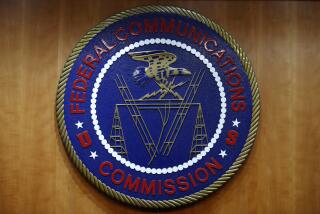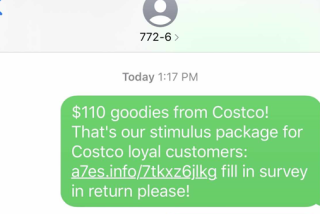FCC Issues Deadline on Area Code Plan
WASHINGTON — Concerned about the costly and disruptive nationwide explosion of area codes, the Federal Communications Commission has given the telephone industry six months to come up with a plan to alleviate the problem.
The FCC asked the North American Numbering Council, a 34-member industry advisory group, to develop national standards to allocate telephone numbers more efficiently. The request, contained in a letter from the FCC’s common carrier bureau to Council Chairman A. Richard Metzger Jr., comes amid growing dissatisfaction with rapid proliferation of area codes.
For the record:
12:00 a.m. April 1, 1998 For the Record
Los Angeles Times Wednesday April 1, 1998 Southland Edition Business Part D Page 3 Financial Desk 1 inches; 23 words Type of Material: Correction
FCC--A. Richard Metzger Jr. is head of the Federal Communication Commission’s common carrier bureau. He was misidentified in a story in Tuesday’s Business section.
In recent months, regulators in nearly half-a-dozen states have threatened to impose moratoriums on new telephone area codes out of concern that the telephone industry is warehousing a vast reservoir of numbers instead of giving them to customers.
Some experts estimate that as many as 500 million telephone numbers, about one-third of those allocated to carriers, are not actively used. They say the surplus is enough to eliminate 60 area codes.
But state efforts to impose an outright ban on new area codes have been met with resistance from the FCC. And last month, a state court in Pennsylvania blocked a bid by the state’s Public Utility Commission to impose a moratorium on new codes in a vast area covered by the 215, 717 and 610 area codes.
FCC officials complain privately that bans on new area codes do not promote competition and are a stopgap measure, at best, in dealing with the more fundamental problem of phone number management.
Experts suggest that the telephone industry allocate telephone numbers based on actual demand from customers rather than simply providing unlimited quantities of numbers carriers, which are proliferating at a furious rate in the wake of telephone industry deregulation.
The FCC letter asked the numbering council to develop a solution, in consultation with state regulatory agencies, and have it ready to implement by December 1999.
In directing the council to come up with a solution, FCC officials indicated that political infighting and competing industry interests appeared to have prevented the telephone industry from quickly dealing with a problem that has been apparent for years.
“The industry has had some problems getting to closure with this issue,” said one top FCC official. “We felt we needed to give them a specific deadline.”
“We are looking for a win-win solution,” added William E. Kennard, chairman of the FCC. “Telecommunications carriers need numbers.” And better number management “may allow us to minimize disruptive area code changes.”
The chairman of the North American Numbering Council could not be reached for comment.
But Vincent Majkowski, a council member and co-chairman of a council steering group on numbering issues, said he welcomed the FCC’s efforts to find a solution.
“The delay has been that everybody has had their own interests based on their own business strategy,” Majkowski said. “I don’t think it’s a question of coming up with new technology.”
The run on area codes stems largely from telephone switching equipment, which requires that seven-digit telephone numbers be allocated in batches of 10,000, even though some carriers do not have customers for that many numbers.
The Pennsylvania Utility Commission, for instance, found that some local phone companies holding blocks of 10,000 numbers had given fewer than half a dozen to subscribers.
Critics say technology exists to allocate numbers in smaller units. Illinois is currently experimenting with a telephone database system that allocates numbers to carriers in units of 1,000.
More to Read
Sign up for Essential California
The most important California stories and recommendations in your inbox every morning.
You may occasionally receive promotional content from the Los Angeles Times.










